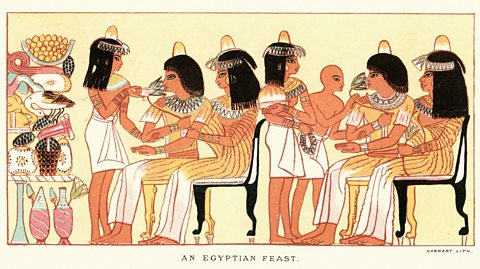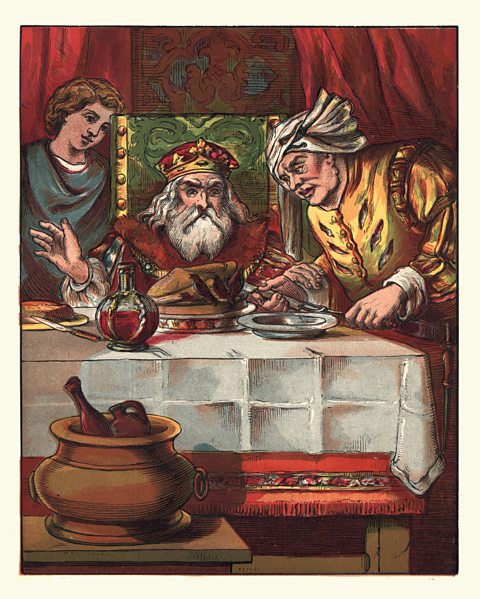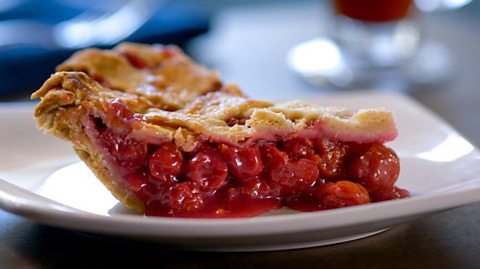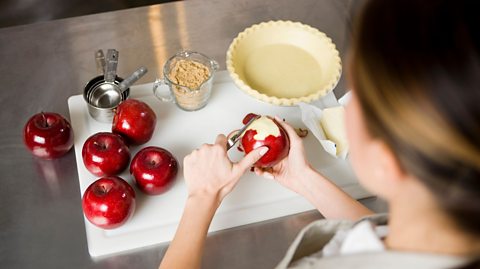Food with a lid. A lid you can eat. And edible sides and bottom too. When you think about it, the pie is a masterpiece of gastronomical engineering.
Perhaps it should come as no surprise then, that 75% of the British population eat a pie at least once a month and the industry is worth £1.2bn a year in the UK alone.
With fillings and pastry cases to suit all dietary needs, itÔÇÖs a dish that can turn up on anyoneÔÇÖs plate and when you consider the history of the pie, itÔÇÖs been on a long and fascinating journey to get there.
From Egypt to Rome via Greece
The Ancient Egyptians were the first to invent a dish close to what we know as a pie today. They had a honey filling covered in a crusty cake made from oats, wheat, rye or barley. A recipe for chicken pie was also discovered on a tablet carved prior to 2000 BC.

Later on, closer to the 5th Century BC, the Ancient Greeks were believed to invent pie pastry as it is mentioned in the plays of the writer Aristophanes and it was possible to work as a pastry chef in this era, a separate trade to a baker.
The Romans took the concept of pies even further. They would make a pastry of flour, oil and water to cover up meat but this was intended to preserve the juices and flavour of the filling and was not intended to be eaten. A Roman cookbook from the 1st Century, called Apicius, mentions recipes that include pie cases. There is even one that we would recognise as a cheesecake, using pastry for a base, which has the interesting name placenta.
With the Romans came roads, and thus their pies (and their recipes) eventually found their way around all parts of Europe.
Pie Britannia
The Oxford English Dictionary records pastry as a word in use by the mid 14th Century and Medieval Latin included the word ÔÇśpieÔÇÖ , meaning ÔÇśmeat or fish enclosed in pastryÔÇÖ from around 1300.

In Britain, the first pies had mainly meat fillings and, just as in Rome, the pastry cases were not necessarily for eating. They were to help food last longer on sea voyages, and also save space - having a hold stacked with pies was a far more sensible use of precious square metres than bringing a cook and dozen of livestock along for the journey.
There was a lot more crust than filling in these pies (or ÔÇśpyesÔÇÖ as it tended to be spelled). The pastry base had the ominous title ÔÇścoffynÔÇÖ (or 'coffin' as we'd know it today) and if fowl was your filling of choice, it often came with its legs dangling over the sides. This supposedly made it easier to pick the pie up and get scoffing.
By medieval times, cooks would try to outdo each other as pies became the centrepiece of exclusive banquets. Anything would be baked into them which would impress as the pastry lid was removed to reveal its filling. Sometimes this would even include live actors reciting poetry (safely hidden inside after the baking process), or even a band of musicians (that must have been one rather large pie).

Fit for a Queen
Elizabeth IÔÇÖs reign will be remembered for such things as her defeat of the Spanish Armada and an age of literature which included William Shakespeare and Christopher Marlowe.

An often overlooked footnote to this era is the revolution the monarch supposedly brought to the worldÔÇÖs bakeries. The very first cherry pie ever baked was reportedly made especially for Elizabeth although her reaction to the taste is unknown.
Pies were even becoming dramatic devices by this time. The aforementioned Shakespeare killed off two male characters in Titus Andronicus by having them baked into a pie as revenge for them attacking the title character's daughter. Titus then served the pie to his victimsÔÇÖ mother.
Sweet as apple pie
World exploration gathered pace and as people from England settled in America, so too did their pie recipes, which evolved away from further British influences.
The name coffin was still used for the pie bases. In this case they were long and narrow and, again, used to keep the fillings fresh more than anything. Eventually, coffin was replaced by ÔÇścrustÔÇÖ as the outer casing of pies began to share a name with the hard, outside surface of bread.

Although America is traditionally associated with apple pie more than any other country, it dates back to England in the 14th Century with a recipe printed by none other than the author Geoffrey Chaucer. It contained plenty of other ingredients, such as figs, raisins and pears - but no sugar.
The heavy USA association with the dessert dates back to the Second World War. When soldiers were asked why they were off to battle, they would often reply: ÔÇťFor mom and apple pie.ÔÇŁ
Days of future pastry
Pies continue to evolve as new cultures and trends affect the fillings we put inside them. Cases made from puff pastry, filo and shortcrust are now popular and are just as important a part of the dish as whatÔÇÖs inside, no longer being treated as flour-based crockery. Butternut squash is now just as good a pie filling as a bit of Stilton or steak and ale.
With pastry now suitable for vegetarian and vegan diets, as well as the sweet crusts which enrobe the richest of dessert fillings, it seems the answer to ÔÇśwho ate all the piesÔÇÖ is clearer than ever.
ItÔÇÖs all of us.
This article was published in June 2019
Why donÔÇÖt we all like the same foods?
How genetics, your mum's diet and bad experiences can shape your tastes.

The classic novels opening line quiz
It was the best of challenges, it was the worst of challenges.

How do animals digest food? video
Find out how animals digest food and get rid of waste.
